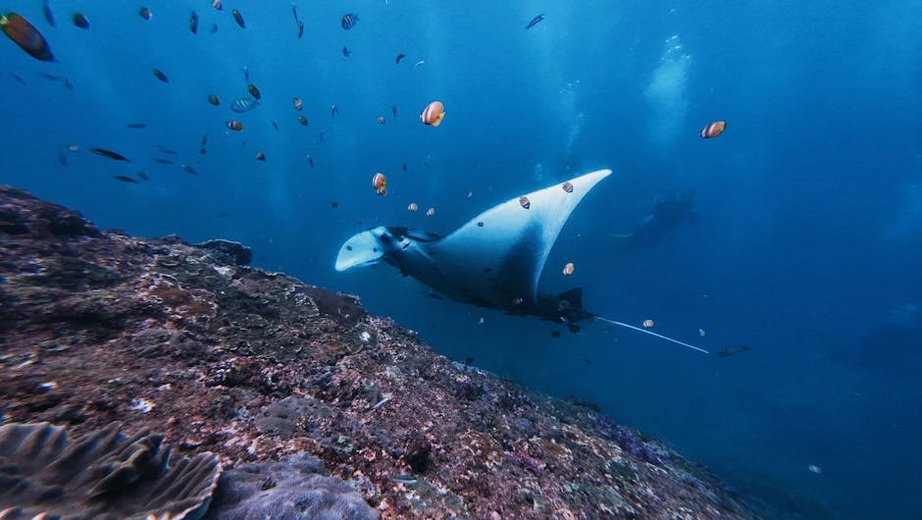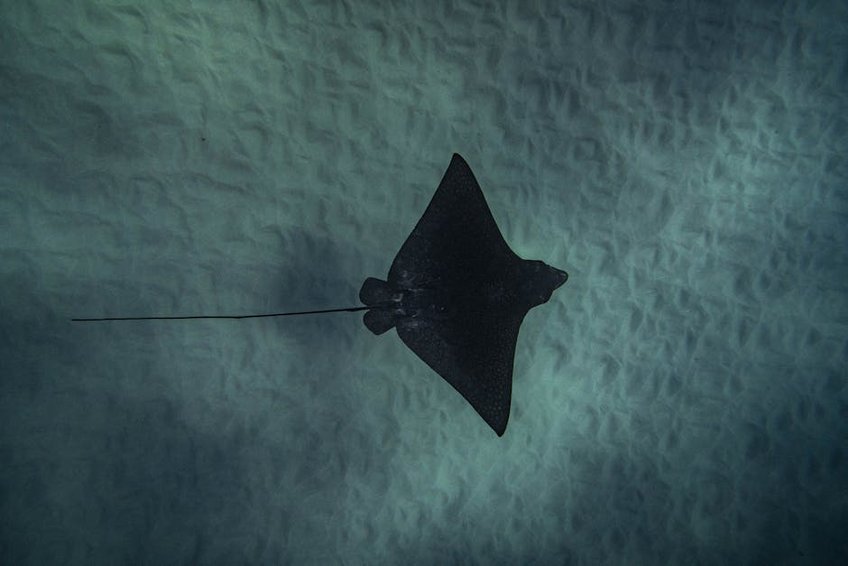Maldives Baa Atoll Manta Rays: Your Ultimate Guide to Swimming with Giants
Imagine floating in crystal-clear turquoise waters while graceful giants glide beneath you—this is the magical experience awaiting you with Maldives Baa Atoll manta rays. As a UNESCO Biosphere Reserve, Baa Atoll hosts one of the world’s largest seasonal aggregations of these magnificent creatures, creating unforgettable encounters for snorkelers and divers alike. You’ll find yourself mesmerized by their elegant ballet-like movements as they feed on plankton-rich currents. The Maldives Baa Atoll manta rays represent not just a bucket-list adventure but a profound connection with marine life that will leave you in awe. I’ve personally witnessed how these encounters transform travelers’ perspectives on ocean conservation. Whether you’re an experienced diver or trying snorkeling for the first time, this guide will help you plan the perfect trip to meet these gentle giants in their natural habitat. From understanding their behavior to choosing the ideal season, we’ll cover everything you need for an epic Maldives Baa Atoll manta rays adventure that combines luxury travel with meaningful eco-tourism.
Maldives Baa Atoll Manta Rays Essential Information – What You Need to Know
Before diving into planning your Maldives Baa Atoll manta rays adventure, it’s crucial to understand why this destination stands out globally for marine encounters. Baa Atoll’s unique geography creates perfect conditions for manta rays, with channel openings that funnel nutrient-rich waters into the atoll during specific monsoon seasons. This natural phenomenon attracts hundreds of mantas between May and November, particularly at famous cleaning stations like Hanifaru Bay. You’ll be amazed to learn that these filter feeders can reach wingspans of up to 7 meters (23 feet), yet they’re completely harmless to humans. The Maldivian government has implemented strict conservation measures to protect these gentle giants, including limited visitor numbers and mandatory guide accompaniment. Understanding these regulations ensures you contribute positively to the ecosystem while enjoying your once-in-a-lifetime experience. The combination of warm waters (averaging 28-30°C or 82-86°F year-round) and excellent visibility makes this ideal for both beginners and experienced marine enthusiasts.
Understanding Baa Atoll and Its Manta Ray Population – Key Facts
- Baa Atoll covers approximately 1,200 square kilometers with 75 islands, but only 13 are inhabited, preserving vast marine areas for wildlife
- The manta ray population includes both reef mantas (smaller, residing year-round) and oceanic mantas (larger, seasonal visitors) with identification databases tracking over 2,000 individuals
- Hanifaru Bay, the crown jewel of manta sightings, can host up to 200 feeding mantas simultaneously during peak season, creating one of nature’s most spectacular underwater events
- Budget traveler option: $1,500-2,500 USD for 5 days using local guesthouses on inhabited islands, public ferries, and day trips to manta sites—includes meals, basic accommodation, and 2-3 manta snorkeling excursions
- Mid-range comfort option: $3,500-6,000 USD for 5-7 days at 3-4 star resorts with package deals that include transfers, meals, and daily snorkeling/diving trips specifically for manta ray encounters
- Luxury experience option: $7,000-15,000+ USD for 7-10 days at 5-star resorts or liveaboard yachts with private guides, unlimited diving, spa treatments, and guaranteed manta ray interactions in exclusive locations
- Maldives Ministry of Tourism Official Site
- Manta Trust Conservation Organization
Why Manta Rays Gather in Baa Atoll – Natural Phenomenon Explained
The gathering of Maldives Baa Atoll manta rays represents one of marine biology’s most fascinating natural events, driven by seasonal monsoon patterns. During the southwest monsoon from May to November, prevailing winds push surface waters away from the atoll, allowing deeper, nutrient-rich waters to upwell through channel openings. This process creates massive plankton blooms that serve as the primary food source for these filter-feeding elasmobranchs. The unique bowl-shaped geometry of Hanifaru Bay acts as a natural trap, concentrating plankton and making feeding exceptionally efficient for the mantas. You’ll witness them performing spectacular barrel rolls as they funnel plankton into their wide mouths. Conservation efforts have been crucial since 2011 when UNESCO designated Baa Atoll as a Biosphere Reserve, implementing measures like no-take zones and visitor limits to protect this fragile ecosystem. Understanding this ecological context will deepen your appreciation for every moment you spend with these magnificent creatures.
Maldives Baa Atoll Manta Rays Planning Your Trip – Best Times and Budgets
Planning your Maldives Baa Atoll manta rays adventure requires careful consideration of seasons, budgets, and preparation to maximize your experience. The peak season for manta sightings aligns perfectly with the southwest monsoon from May through November, when plankton concentrations are highest and mantas gather in impressive numbers. However, this period also coincides with the rainy season, though showers are typically brief and won’t significantly impact your underwater activities. You’ll need to balance your desire for optimal manta encounters with other factors like crowd levels and pricing—shoulder months like April and December can offer good sightings with fewer visitors. Budget planning is essential since the Maldives ranges from ultra-luxury to more affordable options, with significant price variations between resort islands and local guesthouses. I recommend allocating at least 5-7 days for your trip to account for weather variables and to experience multiple manta ray habitats. Remember that advance bookings are crucial, especially for popular resorts and liveaboards during high season.
Best Time to Visit for Manta Ray Sightings – Seasonal Analysis
For the absolute best Maldives Baa Atoll manta rays encounters, target June through October when plankton densities peak and manta congregations are most reliable. During these months, you’ll have approximately 80-90% chance of sightings at key locations like Hanifaru Bay, with July and August being particularly spectacular. The wet season brings occasional rain showers, but water visibility remains excellent at 20-30 meters (65-100 feet), and you’ll appreciate fewer crowds than the dry season. If you prefer calmer seas and guaranteed sunshine, consider April-May or November as shoulder seasons—you might see slightly fewer mantas but will enjoy perfect weather conditions. Winter months from December to March still offer manta opportunities, especially at cleaning stations, though the massive feeding frenzies are less common. Moon phases also influence manta activity, with higher tides during full and new moons creating stronger currents that concentrate plankton, making these ideal times for advanced snorkelers seeking the most dramatic encounters.
Budget Planning and Costs for Your Manta Ray Adventure
Essential Preparation Checklist – What to Bring and Know
Preparing properly for your Maldives Baa Atoll manta rays adventure ensures you’ll focus on the magic rather than logistical challenges. First, verify your passport has at least six months validity and check visa requirements—most Western nationals receive 30-day tourist visas on arrival. Pack reef-safe sunscreen to protect the fragile coral ecosystems, along with UV-protection swimwear for extended time in the water. Bring your own mask and snorkel for perfect fit, though most operators provide quality equipment. Underwater cameras with polarizing filters will capture stunning manta footage without disturbing the animals. physically prepare by practicing snorkeling skills beforehand if you’re inexperienced—being comfortable in the water maximizes your enjoyment. Book tours with certified eco-operators who follow strict guidelines about maintaining distance from the mantas. Finally, purchase comprehensive travel insurance that covers water activities and medical evacuation, as remote atoll locations require specialized care if emergencies occur.

Maldives Baa Atoll Manta Rays Top Attractions and Activities
Your Maldives Baa Atoll manta rays experience extends beyond the main event to include incredible marine diversity and stunning natural beauty. While the mantas understandably steal the show, you’ll discover vibrant coral gardens teeming with tropical fish, occasional whale shark sightings, and pristine sandbanks perfect for relaxation between snorkeling sessions. The atoll’s geography creates diverse habitats—from shallow lagoons ideal for beginner snorkelers to channel edges with stronger currents that attract larger pelagic species. Many resorts offer complementary activities like sunset dolphin cruises, traditional Maldivian cooking classes, and spa treatments using local ingredients. For adventure seekers, night snorkeling reveals a different world of bioluminescent plankton and nocturnal marine life. Conservation-focused tours educate visitors about manta ray research and protection efforts, allowing you to contribute to citizen science projects. Whether you’re seeking pure relaxation or non-stop adventure, Baa Atoll delivers an unforgettable blend of natural wonders and cultural experiences.
Must-See Manta Ray Hotspots in Baa Atoll – Prime Locations
Hanifaru Bay unquestionably tops the list for Maldives Baa Atoll manta rays encounters, especially during feeding frenzies where dozens of mantas create breathtaking underwater ballets. This marine protected area requires visiting with licensed guides during designated hours, preserving the ecosystem while ensuring optimal viewing. Nearby, Dharavandhoo Thila serves as a major cleaning station where mantas hover motionless while cleaner wrasse remove parasites—an incredible opportunity for close observation and photography. For drift snorkeling experiences, Horubadhoo Thila offers gentle currents that carry you past coral formations frequented by mantas and other large marine life. Muthaafushi Island’s channel attracts mantas during incoming tides, creating reliable viewing opportunities throughout the season. These prime locations each offer distinct experiences, so I recommend visiting multiple sites to appreciate the full spectrum of manta behaviors. Early morning visits typically provide the calmest conditions and best light for underwater photography.
Hidden Gems and Lesser-Known Snorkeling Spots – Local Favorites
Beyond the famous manta sites, Baa Atoll conceals numerous hidden gems where you can enjoy intimate marine encounters away from the crowds. Kudadhoo Kandu, a narrow channel between islands, creates strong currents that attract mantas during specific tide cycles, offering adventurous snorkeling for experienced swimmers. The house reef at Reethi Beach Resort features an unexpected manta cleaning station just meters from shore, accessible even for nervous snorkelers. During neap tides when Hanifaru Bay is closed, local guides often take small groups to Olhugiri Kandu where mantas frequently gather in smaller numbers. For something completely different, the mangrove ecosystems on some uninhabited islands provide unique snorkeling opportunities where juvenile marine life thrives. These lesser-known spots require local knowledge, so building relationships with experienced guides pays dividends. Remember that marine conditions change daily, so flexibility in your itinerary allows you to capitalize on these hidden treasures when conditions align perfectly.
Maldives Baa Atoll Manta Rays Practical Travel Information
Navigating the practical aspects of your Maldives Baa Atoll manta rays trip ensures smooth travels from arrival to departure. The Maldives operates on Maldives Time (MVT), which is GMT+5, and uses the Maldivian Rufiyaa (MVR) as currency, though US dollars are widely accepted at resorts. You’ll find English spoken universally in tourist areas, eliminating language barriers. Electrical outlets use British-style three-pin plugs (230V), so bring appropriate adapters. Internet connectivity varies—resorts offer WiFi, often at additional cost, while local islands have improving but sometimes unreliable service. Healthcare facilities on inhabited islands provide basic care, but serious medical issues require transfer to Male’, so comprehensive insurance is essential. The Maldivian culture blends South Asian, Arab, and African influences, with Islam as the state religion—respect local customs by dressing modestly outside resort islands. Understanding these practical details helps you focus completely on your manta ray encounters rather than logistical concerns.
| Accommodation Type | Key Features and Amenities | Price Range Per Night (USD) |
|---|---|---|
| Local Guesthouses | Basic rooms, shared facilities, cultural immersion, arranged day trips | $50-150 |
| Mid-Range Resorts | Private beaches, pools, spas, multiple restaurants, organized snorkeling | $300-600 |
| Luxury Resorts | Overwater villas, private pools, butler service, exclusive manta tours | $800-2,000+ |
| Liveaboard Yachts | All-inclusive diving, multiple site visits, marine biologists on board | $400-1,000 per person |


